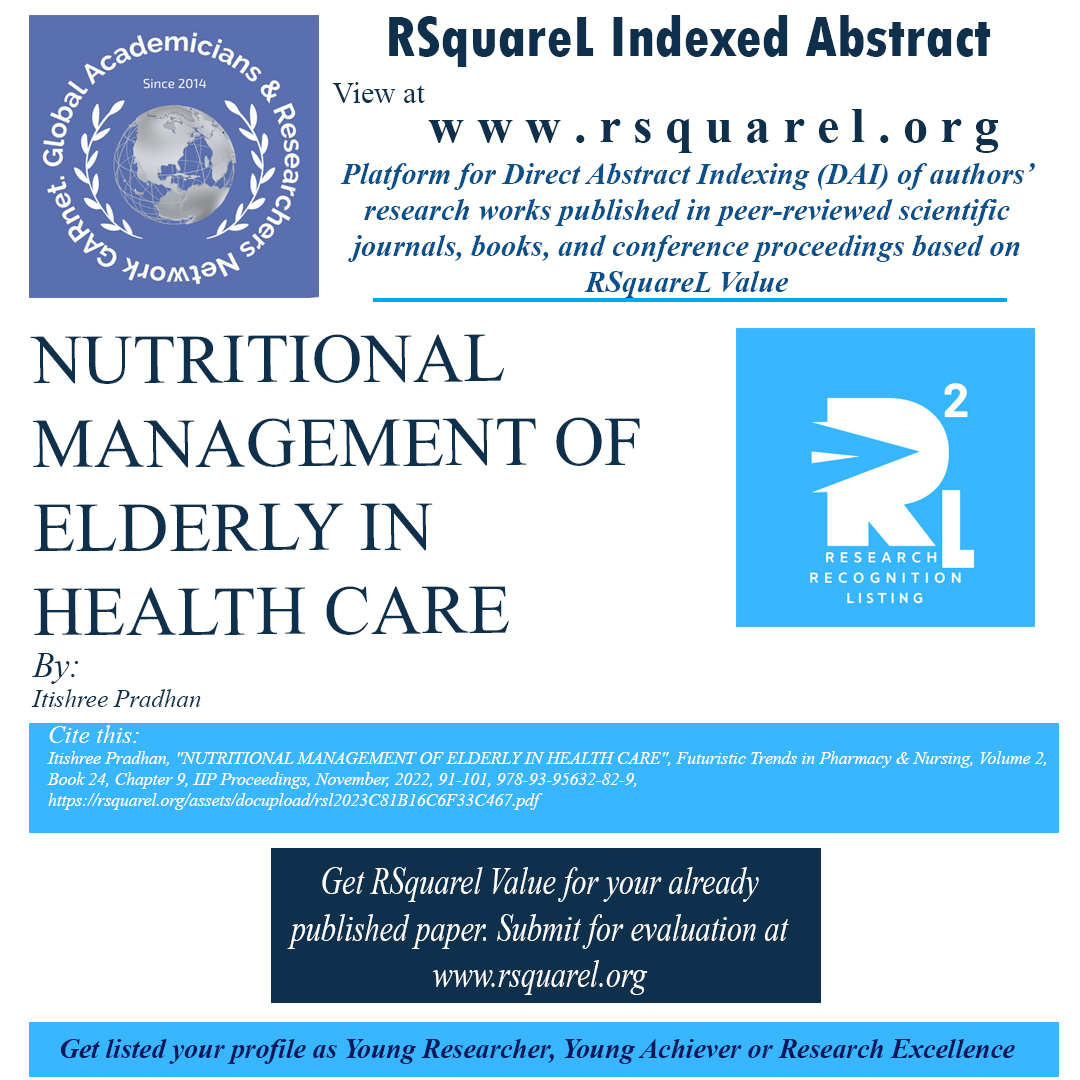editedbook
Publication: IIP Proceedings Year: 2022, Month: November Page No: 91-101, ISSN/ISBN: 978-93-95632-82-9, DOI/Link: https://rsquarel.org/assets/docupload/rsl2023C81B16C6F33C467.pdf
NUTRITIONAL MANAGEMENT OF ELDERLY IN HEALTH CARE
Area/Stream: Pharmacy & Nursing, Authors: Itishree Pradhan Keywords: Elderly, nutrition, immune function, screening. Book Name /series: Futuristic Trends in Pharmacy & Nursing, Volume 2, Book 24, Chapter 9Publication: IIP Proceedings Year: 2022, Month: November Page No: 91-101, ISSN/ISBN: 978-93-95632-82-9, DOI/Link: https://rsquarel.org/assets/docupload/rsl2023C81B16C6F33C467.pdf
Abstract:
From the beginning of 20th century, the average no of years a person can expect to live has significantly grown, rising from 47 years in 1900 to 77 years in 2000. Because of the development of antibiotic therapy, there has also been a change in the primary causes of mortality away from infectious diseases and toward chronic incapacitating illnesses including heart problems, stroke, diabetes, and cancer .Diseases of chronic -related conditions are frequently avoidable. Care for the elderly must necessarily go much beyond coping with mortality since chronic illnesses impact quality of life, health care expenses, medication administration, and caregiving (52). The physiological changes that come with ageing affect all people. Despite whatever the slope of change varies greatly and is likely impacted by elements including lifestyle, genetics, and life events (11). Ageing is often followed by a fall in bone density, a loss of muscle mass, an obesity increases, a redistribution of fat storage toward the visceral regions, and a reduction in total body water. The Nutrition Screening Initiative has created specific screening and evaluation tools for seniors (NSI; 44). It contains anthropometric information, such as height, weight, and weight loss, as well as questions on general geriatric care and self-evaluation. Significant protein calorie malnutrition is present in 5 to 12% of elderly people who live in the community, but it escalates to 23 to 85% of those who are hospitalised or in long-term care facilities (53). It is important for researchers to pinpoint elements that enhance our quality of life as we age, maximise the nutritional status of the elderly, identify people at risk for undernutrition and obesity early on, specify the ideal protein and micronutrient requirements, and work to fend off the age-related ravages of skeletal muscle loss and debilitation. Future nutritional research has a lot of interesting potential in these areas.
Cite this: Itishree Pradhan,"NUTRITIONAL MANAGEMENT OF ELDERLY IN HEALTH CARE", Futuristic Trends in Pharmacy & Nursing, Volume 2, Book 24, Chapter 9, November, 2022, 91-101, 978-93-95632-82-9, https://rsquarel.org/assets/docupload/rsl2023C81B16C6F33C467.pdf
Views: 4169
Download File
News
